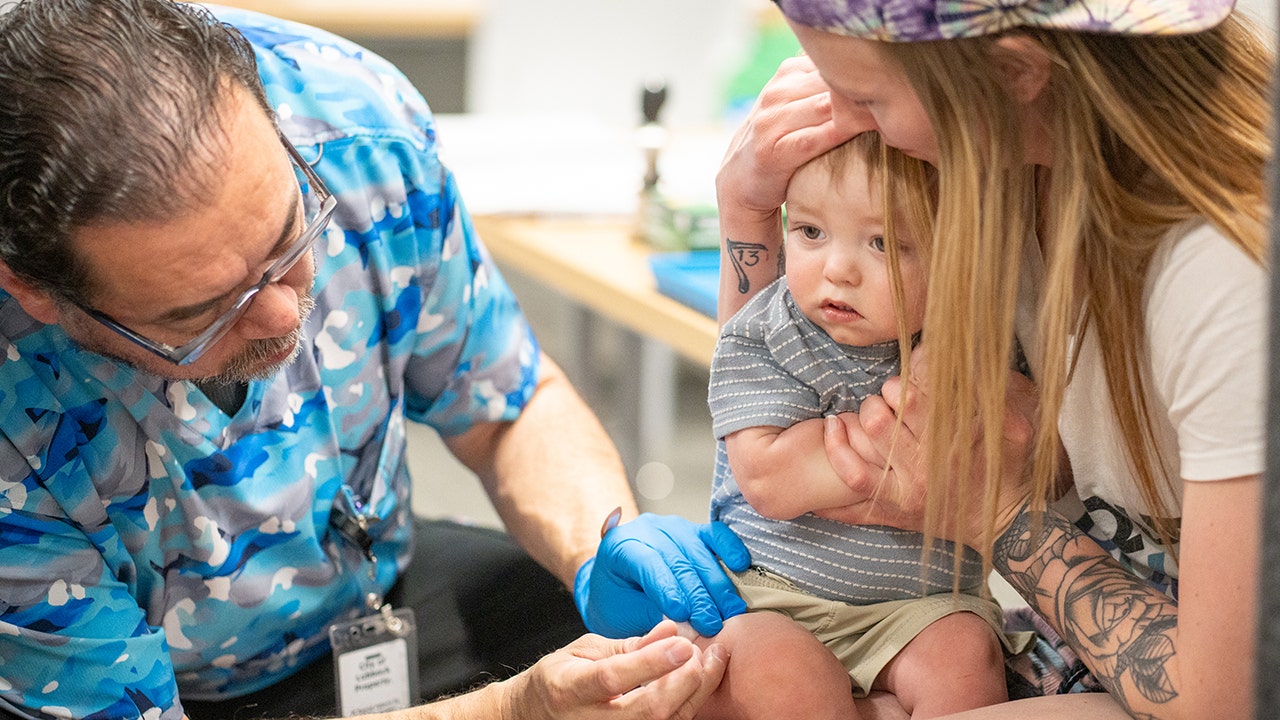An exceptionally musical dancer, Tiler Peck has an ear for rhythm. But as a director and curator, she also has an eye — for talent, for selecting equally eager, go-for-broke collaborators and for exploring, in disparate ways, the visualization of sound.
This weekend, she took over New York City Center for its inaugural Artists at the Center series, creating a program with four premieres showcasing not just her body but her mind. What draws her to dancing? Music matters, personalities matter. What does she want to say about the field in this moment of the pandemic? Don’t quit, you only live once — may as well have fun.
Her music-and-dance buffet, which opened Friday, is full of verve — joyful if not exactly transformative. It brings about the kind of fulfillment an Instagram post might: pleasant but forgettable. Peck, a highly regarded principal at New York City Ballet, loves to show how ballet can coexist with other forms of dance, notably tap. That this program has unofficial roots in the Vail Dance Festival, which is directed by Damian Woetzel — and, similarly, presents a mix of dancers from various backgrounds — is clear.
She’s also started to choreograph in recent years. In the New York premiere of “Thousandth Orange,” set to music by Caroline Shaw and commissioned by the Vail festival in 2019, Peck assembles an exceptional cast — Isabella Boylston, India Bradley, Herman Cornejo, Jovani Furlan, Christopher Grant and Lauren Lovette — who end up where they started: arranged in a tableau center stage.
Throughout, they peel off into wistful solos and duets or sit on the floor, watching each other perform — a change in perspective that unfortunately shifts the tone from angelic to sentimental. But there is a spare, delicate quality about “Thousandth Orange,” which was made when Peck, injured, couldn’t move much herself. It’s a fleeting showcase of dancers — and over before you know it.
For “Swift Arrow,” the choreographer Alonzo King showcases Peck and Roman Mejia in a pas de deux set to music by Jason Moran. This is short, too, but it has texture, tone — it’s electric with tension. Peck, looking ravishing in a royal blue leotard by Robert Rosenwasser, starts the dance off with a brisk solo that despite being full of attack and speed, is also fluid and enhanced by an underlying groove.
Mejia has his own solo. In both, the dancers, lost in their own worlds, take up space with splayed arms as they illuminate arresting angles of the hips, the spine. Then, all of a sudden, the music quiets down, and Peck and Mejia find themselves facing each other, cemented in a relationship.
In this duet of raw lyricism, the dancers test limits — of being off-balance, of softness, of aggression, of strength. As it develops, Peck shows a more vulnerable side of her dancing than she has in recent performances at City Ballet where she has seemed more authoritative than authentic; it’s so much more enthralling when the mysteriousness of her musicality takes hold, and here, King leads her into a more spontaneous space.
In “Time Spell” — with its subtitle of “subdivisions of time and space, intersections of isolation and community, longing and joy” — choreography is credited to the tap artist Michelle Dorrance, the Los Angeles choreographer and dancer Jillian Meyers and Peck, along with Byron Tittle as associate choreographer. Over the course of several episodes, tap shares the stage with ballet; at times, the dancers improvise. Rambunctious and bright, “Time Spell” is a theatrical jumble — both affecting and corny.
The freshest contribution is the music by Aaron Marcellus and Penelope Wendtlandt, who vocalize and, every so often, join in the dancing. Their voices ground this constantly evolving tapestry as Dorrance, and her riveting, lanky grace, guides the rhythmic pulse with her articulate feet. Tap dancers line up on platforms creating tonal worlds beneath pools of light; ballet dancers spin across the stage in rapid-fire chaînés.
Parts of “Time Spell” were galvanizing, yet it also had the feeling of a medley that just kept rolling along — morphing if not exactly developing into a greater whole. At times, it looked like an ad for Peck’s leotard line, Body Wrappers. I wish a duet between Dorrance and Peck had developed into something more; the way they absorb rhythm in the other’s body is dramatic, alive. It could have been the start of something new, but “Time Spell” stuck to convention right down to its unison, showstopping finale. And it wasn’t even the closer.
The pacing of the evening was confusing, and the program ended with a ballet it might have been better to start with: William Forsythe’s scintillating “The Barre Project, Blake Works II,” based on a digital ballet created remotely in 2021 and here brought to theatrical life. During the pandemic, a ballet barre was hard to come by for dancers training at home. In his work, Forsythe treats it like a precious object. Placed onstage, the barre becomes a springboard that dancers use to push off from, flicking from side to side as they spin alongside it or sharply extending a leg forward and back in acts of precise, unaffected virtuosity.
Set to music by James Blake, “The Barre Project” features Lex Ishimoto, Brooklyn Mack, Mejia and Peck, who take turns performing with the barre before spilling out onto the stage. At the start, lighting frames the dancers like a smartphone in portrait mode: tight and contained. But as the ballet progresses, the stage becomes a landscape, making it seem like Forsythe has transformed the stage into a screen and then back again.
All the while, the dancing is sleek and robust, concise and powerful without abandoning elegance. Forsythe celebrates ballet vocabulary in bounding jumps, small and large — and always in his use of épaulement, or the angles and carriage of the arms. We see the whole body, freed from the isolation of the pandemic, in live action. And Peck looks reborn in solos that show her for what she is: A ballerina with jazz in her bones.




















Discussion about this post